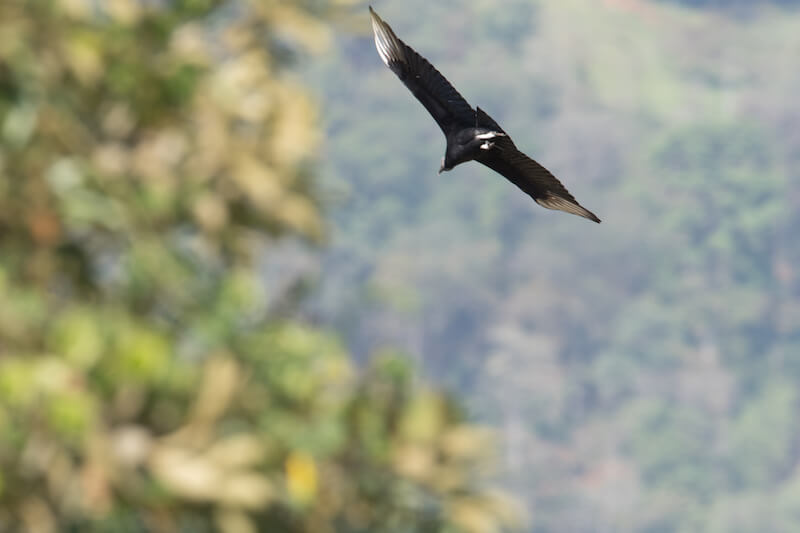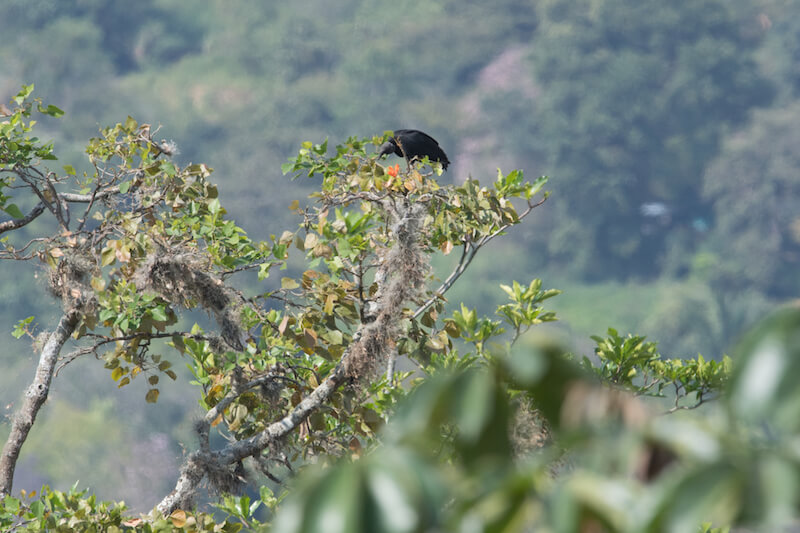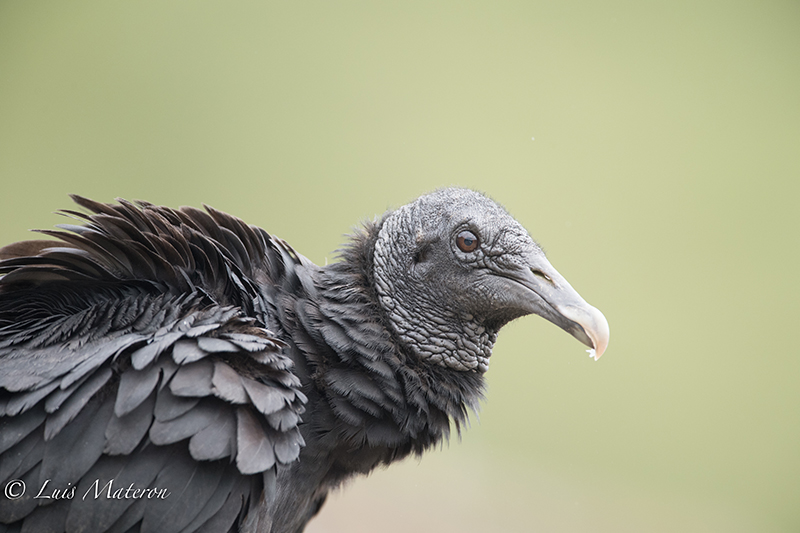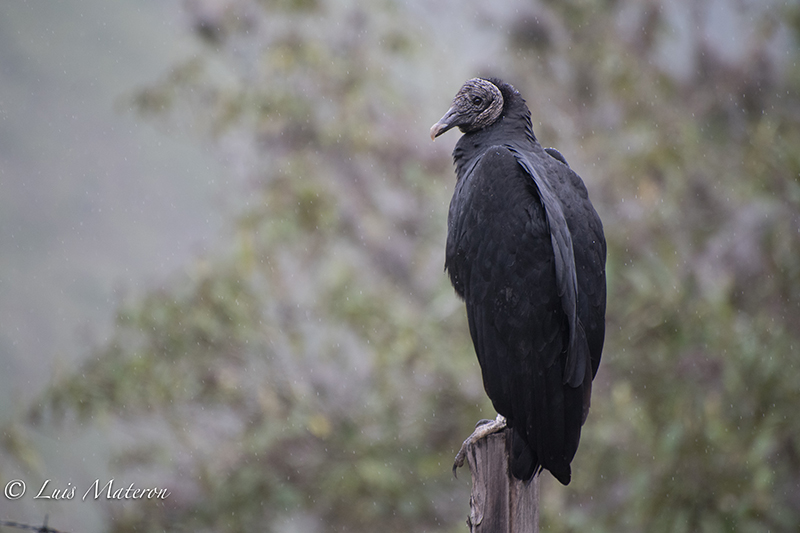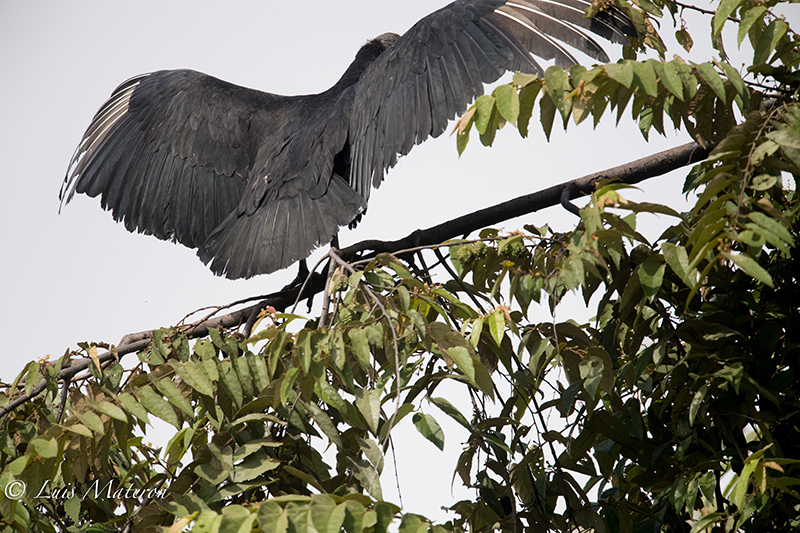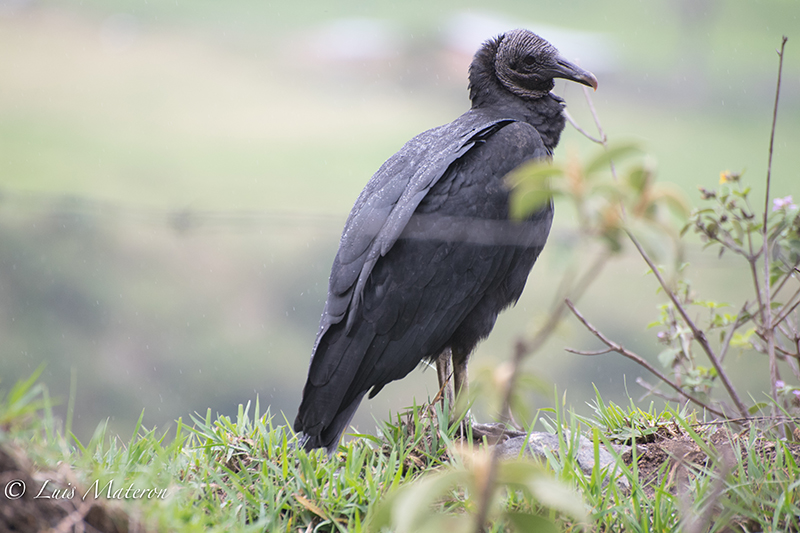Coragyps atratus
Its name implies a crow dressed in black. It is a fairly large bird of prey with a wingspan reaching from 1.3 to1.7 m (52-66 in). The wings are broad but relatively short. The head and neck have no feathers. It has a dark gray and wrinkled skin. The iris is brown and has a single incomplete row of eyelashes on the upper lid and two rows on the lower lid. The legs are grayish white, while the two front toes of the foot are long and have small webs at their bases. The feet are weak and flat and are not adapted to grasping.. The tail is short and square, barely reaching past the edge of the folded wings. It is usually seen soaring or perched on fence posts or dead trees. It is known to regurgitate when approached or disturbed, which assists in predator deterrence and taking flight by decreasing its takeoff weight. In natural settings, the black vulture eats mainly carrion. In areas populated by humans, it may scavenge at garbage dumps, but also takes eggs and decomposing plant material and can kill or injure newborn or incapacitated mammals. It forages by detecting the scent of ethyl mercaptan, a gas produced by the beginnings of decay in dead animals. Like other birds with scavenging habits, the black vulture presents resistance to pathogenic microorganisms and their toxins. Anti-microbial agents may be secreted by the liver or gastric epithelium or produced by own bacterial intestinal population or microbiota. The vulture is often seen standing in a spread-winged stance. This could serve multiple functions: drying the wings, warming the body, and baking off external bacteria. The black vulture lays its eggs on the ground in a wooded area, a hollow log, or some other cavity, seldom more than 3 m (10 ft) above the ground. While it generally does not use any nesting materials, it may decorate the area around the nest with bits of brightly colored plastic, shards of glass, or metal items such as bottle caps.
Su nombre técnico significa cuervo-buitre vestido de negro. Es una ave de rapiña, gregaria y carroñera. Se le encuentra generalmente en los alrededores de los centros urbanos en los basureros o rellenos solitarios. De plumaje negro, cabeza desnuda con pliegues y arrugas, patas largas y garras no prensiles. Cabeza y cuello sin plumas. La longitud de sus alas abiertas alcanza 1.5 m (4.9 ft). Su pico es ligeramente curvo y negro. Iris color marrón oscuro casi negros. Pesa entre 1.6 a 3.0 kg (3.5 -6.6 lb). Tiene un vista muy aguda. Detecta animales muertos o basuras para luego descender rápidamente y controlar su aterrizaje abriendo súbitamente sus alas. Detecta olores del gas etil mercaptan que se produce cuando los animales comienzan a descomponerse. Además puede atrapar animales indefensos recién paridos. Su estómago le permite digerir sustancias a un alto nivel de acidez. Presenta resistencia a las toxinas producidas por microorganisms patogénicos. Su hígado o epitelio gástrico o su propia flora microbial pueden neutralizar tales toxinas. Nida en acantilados rocosos, troncos, nidos abandonados o en matorrales. Sus nidos son diferentes pues usan plásticos, vidrios, tapas de botellas, pedazos de metal entre otros para su construcción. Pone dos huevos de color azul verdosos con manchas cafés. Período de incubación tarda entre los 40-42 días. Es una ave sociable que comparte dormideros comunales en una gran diversidad de sitios. Juegan un papel importante en los ecosistemas ya que consumen carroña que si no fuera así sería una fuente de enfermedades.
LAM_0258 2
LAM_0261
LAM_0261
LAM_5201
LAM_5287
LAM_5204

the BLACK VULTURE is a scavenging bird of prey
el GALLINAZO NEGRO es un ave de rapiña carroñera
